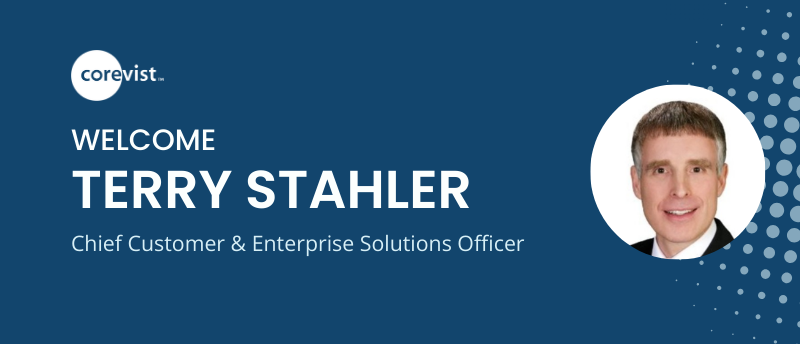Share
Author
Sam Bayer
Share
hybris vs. Magento: Integration Evaluation
Last updated 8/5/19.
When you’re comparing hybris vs. Magento, where do you start?
If you’re running SAP ERP, this question should always start with an evaluation of each platform’s SAP integration capabilities. Here’s why it matters: Not all integrations are created equal. In fact, some “integrations” don’t integrate at all. That’s why Corevist offers a managed Magento solution that’s integrated to SAP out of the box.
In this article, I’ll share 5 lessons learned from hybris vs. Magento integrations to SAP. I’ll give you some caveats to consider as you evaluate solutions, and I’ll point out some tough lessons. Let’s dive right in.
Lesson #1 – The industry sells Integration but delivers Duplication
Here’s the hard reality. In this industry, even after an integration, SAP® ERP and hybris/Magento are often two separate, standalone enterprise systems. They’re not designed with each other in mind.
While SAP® ERP has finally acquiesced that it is not in the business of delivering a rich user experience to website users, the e-commerce platforms have made no such admission with regards to their ability to manage the commercial aspects of the e-commerce transactions.
Therein lies the rub when you’re evaluating hybris vs Magento.
When marketing organizations bring in a hybris SAP integration (or Magento, which we prefer) to solve the rich content/user experience problem, they drop the “integration to SAP®” challenge on the doorstep of IT like an abandoned infant at an orphanage.
The solution?
Duplicate everything that’s in SAP® onto the eCommerce platforms, whether hybris or Magento. Duplicate everything. Customers, products, pricing, inventory, credit rules, freight selections, deliveries, order documents, etc.
Everything.
That is not “Integration”. That’s “duplicate and synchronize”. Which, by the way, may very well make sense in the B2C scenarios where data isn’t very complicated (as opposed to B2B contract pricing) nor is it very volatile. But it certainly doesn’t work for the B2B world!
That’s two separate systems operating separately. “Separate but equal” was a very expensive, and ultimately losing political doctrine in America’s historical attempts to integrate our society. Maybe the technology industry should study history?
Keep that in mind as you evaluate hybris vs Magento. But now let’s move to Lesson #2…
Lesson #2 – System integrators have no incentive to deliver simple solutions…
…when complicated ones earn more money.
I just interviewed a developer in Latin America who was on a hybris SAP integration project for the past 2.5 years. At its peak, 30 people were on the Accenture led project with 15 working remotely from India. A staff of 12 remain to handle post GoLive support.
Yummy.
Duplication = higher cost. Keep that in mind as you’re evaluating hybris vs. Magento.
Lesson #3 – Nobody ever gets fired for buying from SAP®
Buying SAP®’s solution is a safe bet.
It may be more expensive. It may not fulfill all of the requirements. It may be more complex. It may be late in getting released. But eventually, SAP® (and its ecosystem) will deliver the goods. I wonder how all of those Web Channel Experience Management customers feel about that? In my conversations with them, I’ve heard some things. I’ve heard that the hybris SAP integration not only didn’t deliver the eCommerce goods, but also set them back years and millions of dollars on their digital commerce journeys.
If you have spare money and time (see Lesson #2)… then all is good.
Our experiences at Corevist tell us that most B2B manufacturers don’t have a lot of loose change or resources hanging around.
Keep that in mind as you evaluate hybris vs Magento…
Lesson #4 – Complicated business problems require simple technical solutions
The worst thing you can do when presented with the challenge of automating a complicated business solution is to automate it.
Rather, the first step of any digital commerce project should always be to truly understand what the users want and how you can simplify the business processes and rules to reduce the friction in giving it to them.
Referring back to that 30 person Accenture project I referenced in Lesson #2, for all orders that are placed on the hybris-SAP-integrated website that aren’t well-formed (missing/bad data), the user gets a “gentle” message that their order was received and it gets put into a “special exception queue” for Customer Service Representatives to deal with.
That’s not much different than your standard EDI scenario. In fact, it’s exactly the same, although the user thinks they are placing an order on an eCommerce website.
If you integrated with SAP® in real time and provided the user with useful feedback to correct their order right then and there everything is simpler and flows through the system quicker.
Don’t automate a bad process. Simplify it first.
Hint: the best way to do this is with a real-time Magento-SAP integration. That’s what we offer at Corevist—plus we’re your “one throat to choke” for all things Magento/SAP. Our managed solution has you covered.
Keep that in mind as you evaluate hybris vs Magento.
Lesson #5 – B2B eCommerce users aren’t all clamoring for your SEO optimized Rich Content.
I wish I had a buck for every time I heard a user say, “I hope you have a ‘quick order’ feature on that new website of yours because that fancy catalog, while pretty… it’s just going to slow me down”. In fact, taking another page out of that aforementioned Accenture project, after 2 years of development effort, the majority of the website’s users still phone in their orders but love to go to the web to track them. Why spend 30 man years delivering functionality that your regular users don’t want? I’ll tell you why, because the Marketing organization thinks that the web channel is primarily going to be used to market to their customers. Attract new business. When in fact, the web channel is first and foremost a vehicle to become easier to do business with (ETDBW). Focus on that first and good things will happen.
Once again, a real-time integration wins the day–and as far as hybris vs Magento, only Magento can be integrated in real time with SAP (via Corevist).
Summary
The biggest lesson I’ve learned on all of these projects is that the best way to deliver value to your customers faster, is to do less work. That means you should focus on what your customers really want from you, simplify your business processes, adopt as simple a technical architecture as possible, move quickly, deliver something useful, then learn and adapt. Whether those things are possible in a hybris SAP integration, I’m not sure.
Be Agile my friends. Be Agile.
Sam
[want_more title=”Researching ecommerce?” subtitle=”Learn about Hybris Alternatives” description=”In the world of SAP ecommerce, Hybris is the elephant in the room. But it’s not the only option for B2B companies.” button_text=”Learn More” button_link=”https://www.corevist.com/hybris-competitors-alternatives/” button_class=”test” title2=”See if for yourself” subtitle2=”Talk to us” description2=”Curious what Corevist Commerce can do for you? Let us show you a personalized demo. You’ll see ecommerce integrated with SAP in real time.” button_text2=”Learn More” button_link2=”https://www.corevist.com/demo/” button_class2=”demo-popup”]







